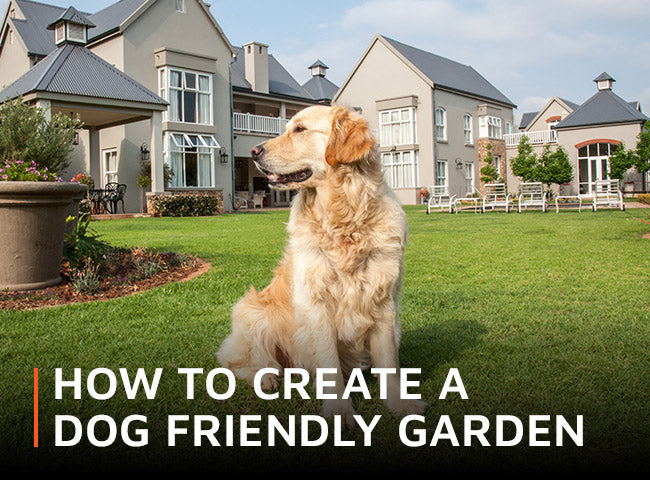British dogs are under threat! Broken fences, poisonous plants and pest control chemicals are just some of the dangers dogs face and you can find many of them in a garden near you!
Dogs love to spend time in the fresh air. But have you ever looked at your garden from a pooch’s point of view? Read on to discover how to create a safe garden space that your canine companion will love.
Houdini Hounds

Image: Fox Hat/Shutterstock
Dogs have become a tempting target for thieves in recent years and fencing is the key to keeping them secure. Solid garden fencing improves security, and stops your pooch from being distracted by what’s going on beyond your garden. Don’t scrimp on height though, as determined dogs can clear a five or six foot fence. Finally, position your patio set with care. Terrier breeds are clever climbers and will use any means available to gain height!
Is your dog a digger? To prevent unwanted tunnelling, the friendly folk at Dogsinthegarden.co.uk suggest sinking your fence a couple of feet into the ground, or lining the internal circumference of the fence with paving slabs:
“Even If your dog is not inclined to try and dig its way out of the garden, try and avoid gaps at the bottom of fences. A gap at the bottom of a fence can encourage even the most unadventurous of dogs to attempt to dig under and escape from your garden.”
If digging is your dog’s favourite pastime, consider making them a garden sandpit of their very own. Bury a few tempting treats in the sand and you’ve got yourself a happily entertained hound.
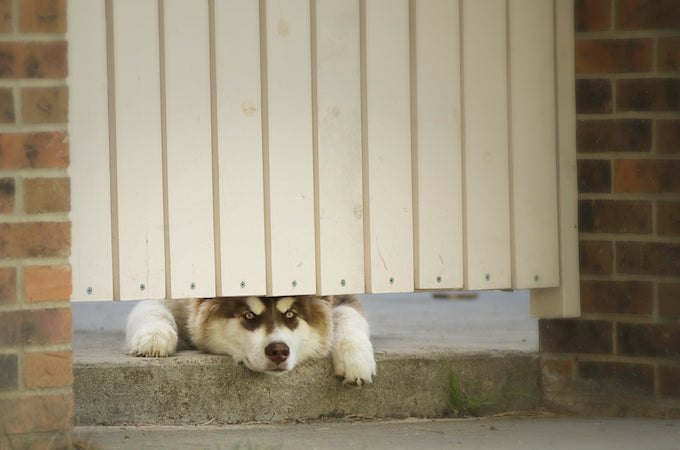
Image: BoulderPhoto/Shutterstock
Another garden escape route that tends to be overlooked is the humble garden gate. Jessica of Velcro Dog says:
“It is important to keep the gates to your garden secure so a pet doesn’t escape. A great way to do this is to install self-closing mechanisms on the gates, such as a gate spring, so they aren’t accidently left open.”
Once you’ve fully secured your garden, you can still reduce your dog’s eagerness to escape by tiring him out with plenty of play and exercise. Keep him mentally stimulated by taking him to places where he can explore freely. Gwen Bailey of Dog Problems Solved asks:
“Do you take him on long walks, or walks that are new and different? If not, try to get out and about more with him, especially if he is an adolescent or a young adult. If you cannot do this, consider employing a responsible dog walker to do this instead.”
Put Gwen’s advice into practice and your pooch will be perfectly content to laze around in the garden.
Pet safe pest control
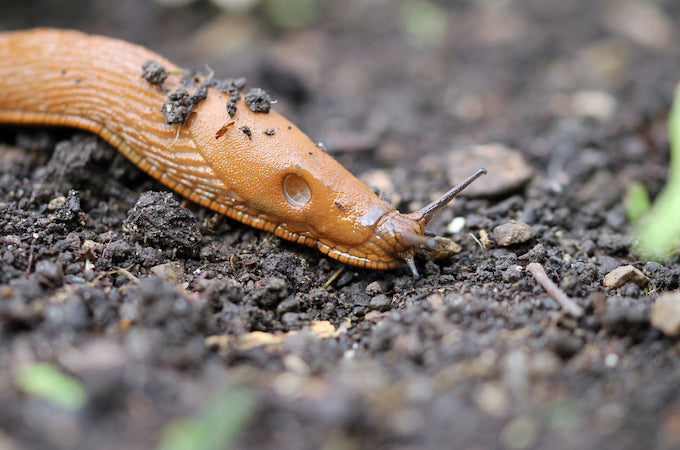
Image: Art_Pictures/Shutterstock
Are your borders being attacked by slimy invaders? Slug pellets do get rid of these pesky pests but beware; they could also result in a very poorly pooch. Traditional pellets contain metaldehyde which is toxic to dogs.
It’s very hard to treat the symptoms of a dog that has ingested this chemical, and deaths have ocurred as a result. The good news is that garden centres now sell pet friendly pellets containing iron phosphate. Or, try this solution from Garden of Eaden blogger Simon:
“ Try spraying your weeds with weak beer as this will help to draw the slugs and snails away from your favourite specimens. Although this is often just a temporary solution, it's ideal for creating sacrificial plants from almost any annual or perennial weed.”
Even if you’re using pet friendly slug pellets, the slimy creatures may still pose a threat to your pooch. Dogs can contract Lungworm simply by drinking water from a bowl where a slug or snail has been, or picking up a toy that a slug or snail has crawled into. The National Animal Welfare Trust suggest:
“Don’t leave toys in the garden overnight – keep them in a snail proof box, and regularly clean out any water bowls in the garden.”
It’s not too hard to make sure your dog’s playground is safe for them with just a few preventative measures.
Poisonous plants
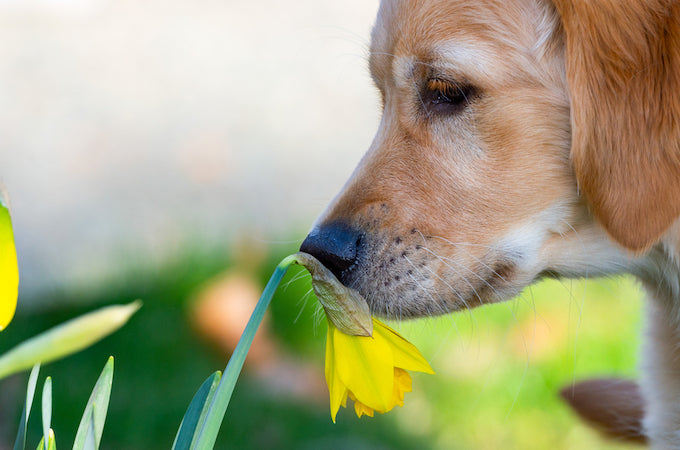
Image: demanescale/Shutterstock
Daffodils are favourites for many gardeners, they’re toxic for dogs. So,if you’re a daffodil loving dog owner, you may want to find an alternative. Experienced dog walker Derek describes the symptoms your dog might experience after eating toxic plants:
“The effects range from mild to serious even fatal. They include allergies and sensitivities through to serious digestive and cardiac/respiratory disorders, paralysis, coma and death. These effects vary according to the type of plant eaten and the breed of dog.”
Check out this handy list of plants to avoid on Derek's blog. We were surprised to discover the inclusion of tomato plants, which are extremely toxic. If a dog eats the leaves, he could suffer from an upset tummy, dilated pupils and a slow heart rate. Our solution? Simply pop your tomato pots on shelves or suspend them.
Not all plants are dangerous to dogs, though. It is perfectly possible to create a safe and beautiful haven for you and your hound. Just identify any toxic plant life (using Derek’s help above) and replace it with a safe alternative. He’s been kind enough to identify some beautiful flowers that are perfectly safe for you and your best friend.
Pooch friendly landscaping
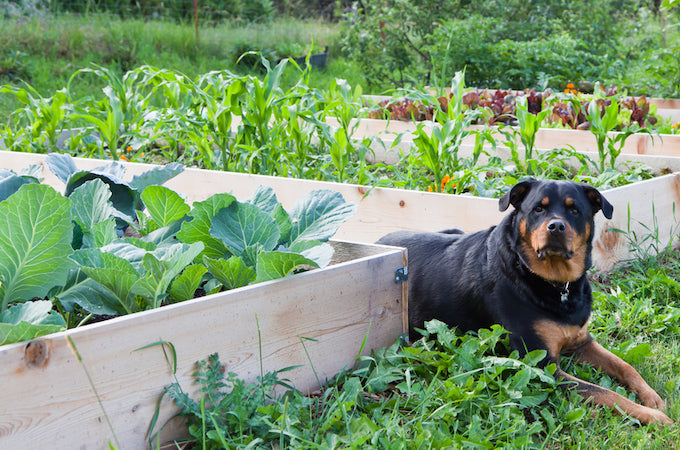
Image: Tami Freed/Shutterstock
This year, the Dog’s Trust won a gold medal for their commissioned dog friendly garden which appeared at the Hampton Court flower show. Liberty London Girl’s Sasha Wilkins was impressed with the garden’s dog-friendly features:
“...including tunnels and sniffer tracks playfully woven into the herbaceous borders,and planting for four-legged visitors to seek out. Everything is categorically non-toxic for dogs, and a beautiful and striking pavilion retreat rests at one end of the garden enabling dogs to survey the landscape with their human guests.”
If you’re willing to get back to basics and re-design your plot, Tracy and Maurice Whelan of Muddy Wellies suggest that you:
“...create raised beds which are less tempting to a dog. Arrange your dog-friendly plants as to minimize trampling and place shrubs around the edges of the beds. You can also plant more fragile plants behind these. To deter your dog from running through the beds, plant your flowers and plants densely.”
Finally, make sure your garden provides a cool, shaded area where your dog can shelter on hot sunny days. You should also offer a shelter from the rain and wind. This could be a kennel, or an arbour or gazebo which your pet can share with all the family.
If you’ve got any pictures of your canine companion enjoying his garden, we’d love to see them them on our Facebook page!
Lead image: tomas devera photo/Shutterstock



